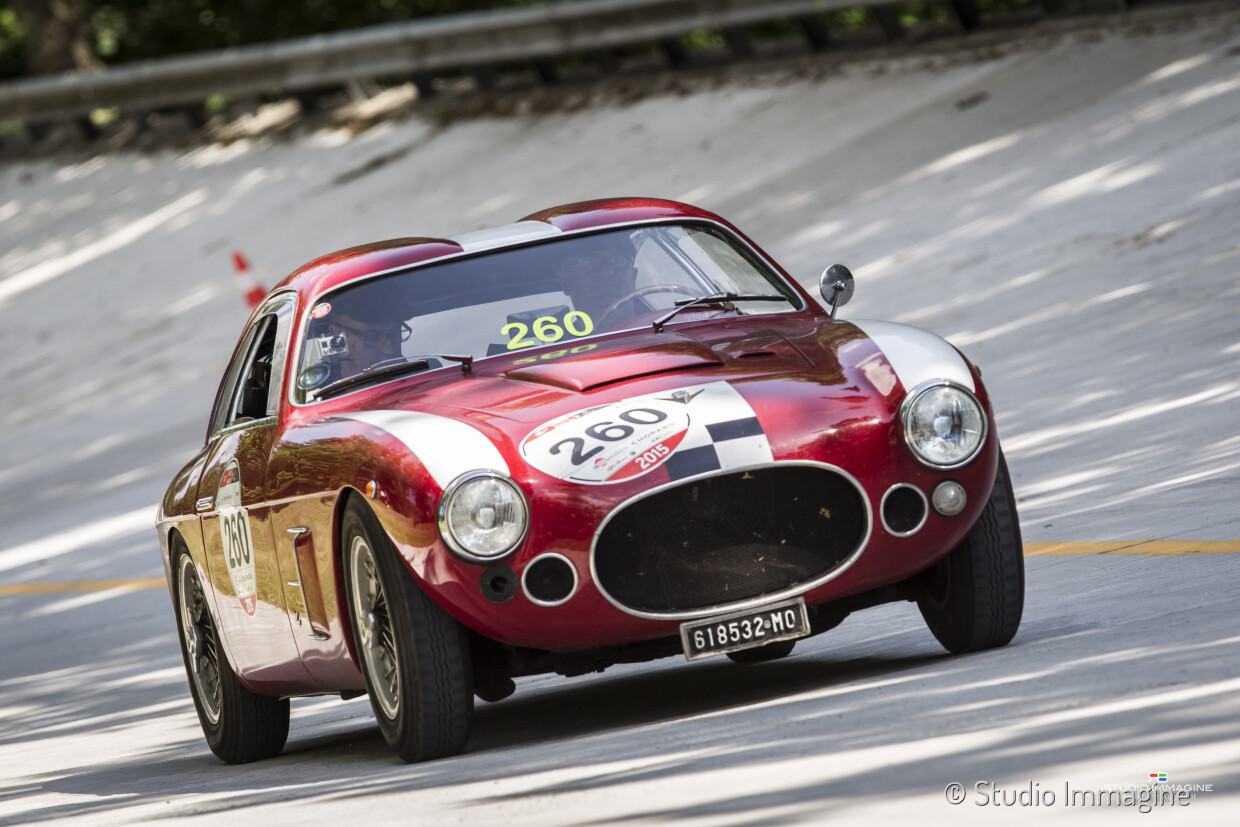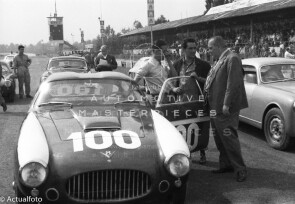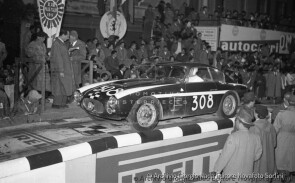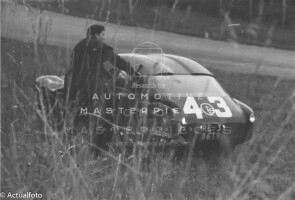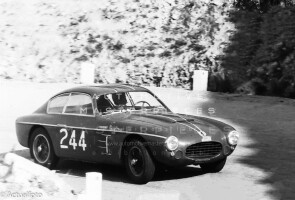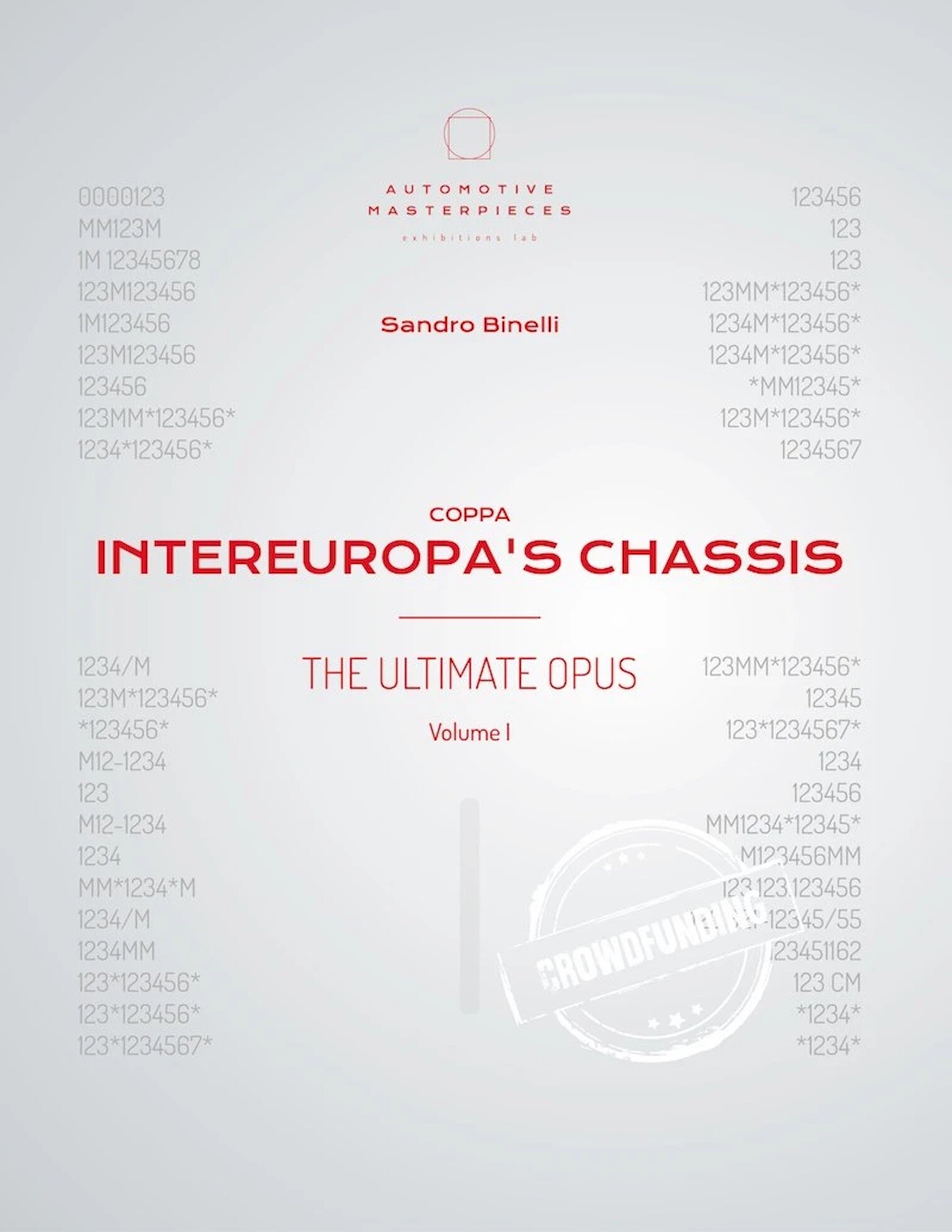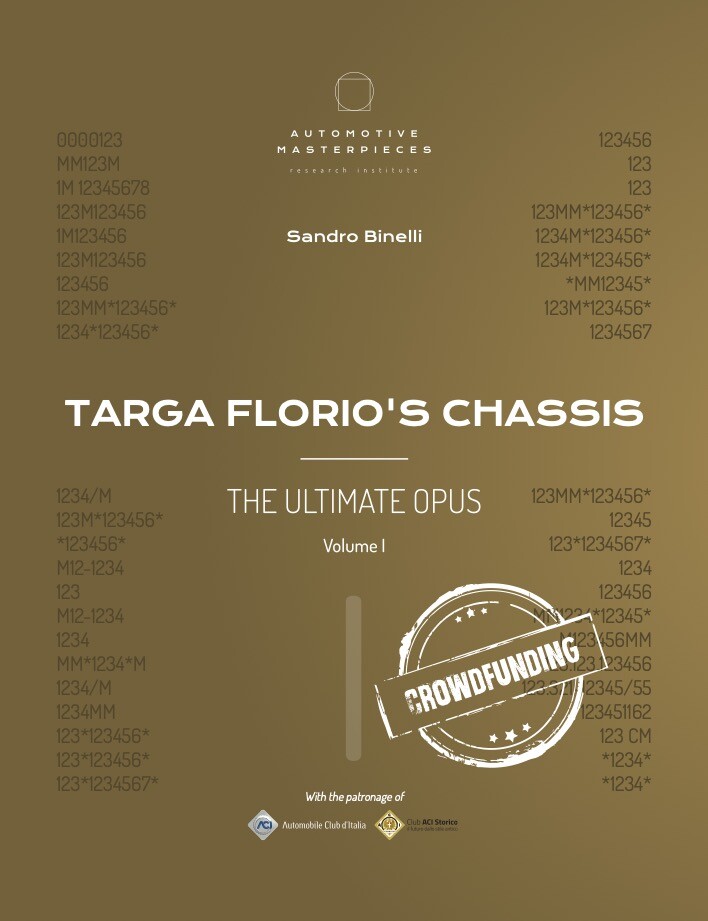
1955 Fiat 8V ZAGATO
ON/OFF
Why am I an Automotive Masterpiece?
L. Limited edition cars
no. 6 manufactured, 5th built. Only 6 "double-bubble" roof were built.
In the postwar period, Fiat was working on an eight-cylinder engine internally known as Tipo 106. The engine was originally designed by Dante Giacosa for a luxury sedan, but that project was stopped. Rudolf Hruska, at the time working at the S.I.A.T.A., was given the task to design a car around the V8 engine. The development took place in absolute secrecy. As not to stress the experimental department of Fiat, production of the chassis was also taken up by S.I.A.T.A. Styled by chief designer Fabio Luigi Rapi, the Fiat 8V or “Otto Vù” was presented to the Italian press in February 1952 and first exhibited the following March at the Geneva Motor Show. The car shapes saw several changes in time: the prototype used an art deco grill extending into the hood which initially characterized the examples of the first series. A second series was made featuring four headlights with some of the later cars having a full-width windscreen. A high-performance coupé, destined to compete in the GT class: the 2-liter 8V model was a departure from the usual Fiat production. It was really welcomed by Italian private drivers, it inspired the tuners and it was, in a word, the car to beat in the 2-liter class, also thanks to the special versions built by Zagato or Siata. The Fiat V8 had a 70° V configuration of 1996 cc of displacement, at 5600 rpm the engine produced 105 hp in standard form with double two-barrel Weber 36 DCS carburetors, giving a top speed of 190 km/h. Some engines were fitted with two huge four-throat Weber 36 IF4/C carburetors offering 120 hp, but the intake manifold was very rare. The Fiat 8V is the only eight-cylinder built by Fiat. The engine was connected to a four speed gearbox. The car had independent suspension all round reworking the Fiat 1100 ones and drum brakes on four wheels. As the body was welded to the chassis it was a semi-unitary construction. Only 114 of these high-performance coupés had been produced, 64 of them with a “Fiat Carrozzerie Speciali” body, 34 first series and 30 second series. It was made available anyway in different body styles, offered by the factory and by various coachbuilders like Zagato, Pinin Farina, Ghia and Vignale. The production ceased in 1954.
The relationship between the Fiat 8V and Zagato began in 1952 when Ovidio Capelli, gentleman driver and FIAT dealer in Milan, commissioned a special body for his 8V chassis no. 000002 to Zagato. Cappelli was looking for a car that was lighter and faster than the production 8V designed by Fabio Luigi Rapi. The one-off was built in aluminum, embodied an “essential beauty” in terms of design, and had excellent racing qualities thanks to its lightness and agility. Cappelli’s victories convinced Fiat and Zagato to build together a small series of the 8V, leader in the GT class. Elio Zagato himself, as a perfect front man for the family business, also achieved good racing results with these cars. Carrozzeria Zagato bodied 31 cars, of which 22 were new from the bare chassis, and the other 9 were re-bodied examples originally with Fiat bodywork; within this group, there were 5 “Elaborata” (derived from the Rapi-designed model), and a one-off spider. In the Zagato philosophy the most important aspect of the design “language” was, since the very beginning, rationalism. The “rationalist” body shape was intended to give the design maximum efficiency to achieve its best possible performance. The aerodynamic solutions adopted in the design stage were intended to harmonize form and function. One of the principles that made Zagato design recognizable was the “double bubble” roof that was used from the beginning of 1950’s. It consisted in a particular silhouette with two parallel humps running from the top of the windshield to the beginning of the rear window. This lowered the front section of the bodywork while retaining sufficient clearance for the driver’s head (wearing a helmet). Zagato built six FIAT 8V cars with this bodywork which became an instantly recognizable design element from the 1960s onward. These six were Elio's 000084, Giancarlo Bonetto's 000083, 000082, 000081 (with a boot lid for limited luggage), 000078, and the last one, 000026, a transformation carried out in 1956.
Chassis 106.000083 was delivered by Fiat to Zagato as rolling chassis in May 29, 1954. It is the 5th of only six 8V with double-bubble roof (000026, 000078, 000081, 000082, 000083, 000084). Chassis 106.000083 was very similar to 000084 Elio Zagato's winning 8V. The differences are the extra air ducts between grille and head lamps and the two window wipers with respect to the three on the Elio's car. One of the other details on this car is the checkered paint job on the nose, a characteristic also present on 000081. The first owners were Carrozzeria La Zagato and Franco Cornacchia who raced it several times with PROVA plates as a kind of publicity stunt to promote the Zagato cars. In 1956 106.000083 started an impressive racing career in the hands of Gianfranco Bonetto, Renzo Cigarini and Franco Lisitano. It ran from 1956 to 1965 several races including Coppa Inter-Europa, Mille Miglia and Targa Florio.
